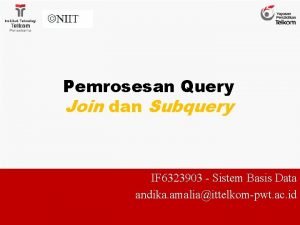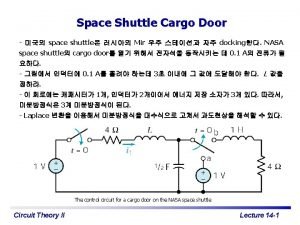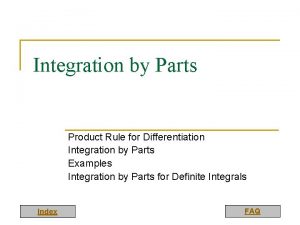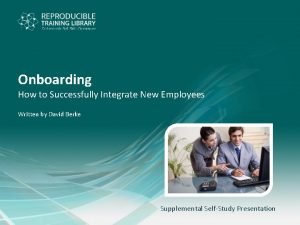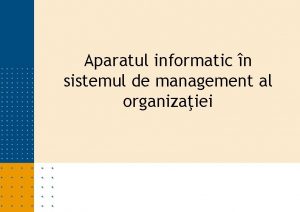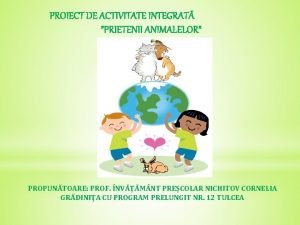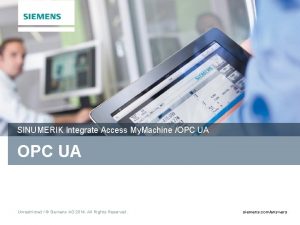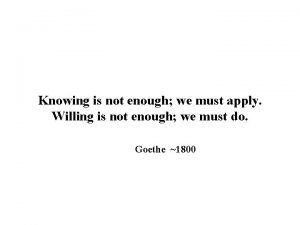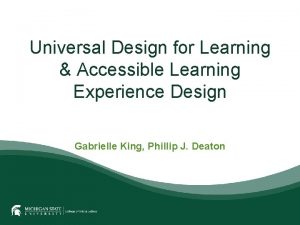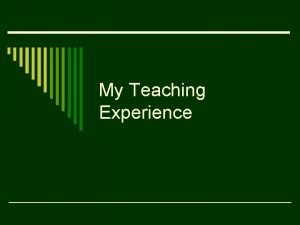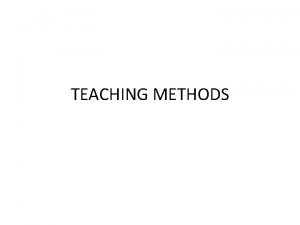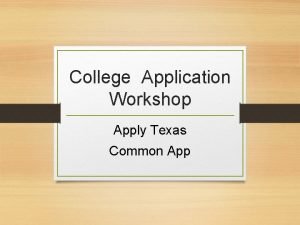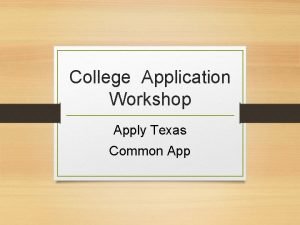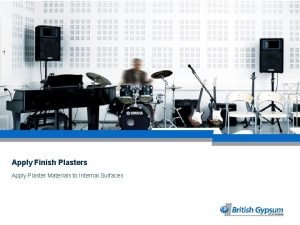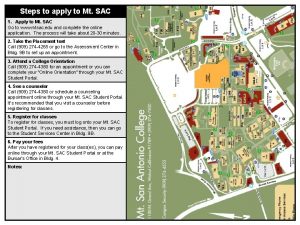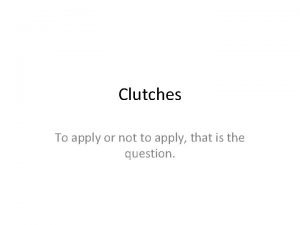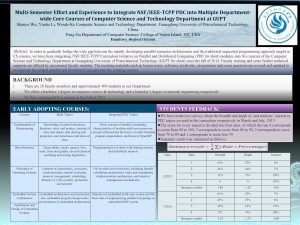LT Meeting Experience apply and integrate learning Teaching



























- Slides: 27

L&T Meeting Experience, apply and integrate learning Teaching for Transfer SPACED PRACTICE AND INTERLEAVING 5 minutes pedagogy 5 minutes practical examples 5 minutes planning

What is it? Where does it come from? How can I get this into my lessons?

? t i s i t a Wh

What is spaced practice? Spaced practice is the exact opposite of cramming. When you cram, you study for a long, intense period of time close to an exam. When you space your learning, you take that same amount of study time, and spread it out across a much longer period of time. Doing it this way, that same amount of study time will produce more long-lasting learning. For example, five hours spread out over two weeks is better than the same five hours right before the exam.



What is interleaving? Imagine you are sitting down to a study session. You have an exam coming up, and all sorts of different topics to study for it. How should you study them - one at a time, or switching between them? Here’s what the research suggests: You shouldn’t study one idea, topic, or type of problem for too long. Instead, you should change it up often. Interleaving like this may seem harder than studying one type of material for a long time, but this is actually more helpful in the long run. This strategy is particularly useful if you’re studying something that involves problem solving - like math or physics - interleaving can help you choose the correct strategy to solve a problem (1). Interleaving can also help you to see the links, similarities, and differences between ideas (2).


Where does it come from? What is desirable difficulty? A learning task that requires a considerable but desirable amount of effort, thereby improving long-term performance. (BJORK)





ROBUST EFFECTIVE

INTERLEAVING BENEFITS The benefit of interleaving is found over a diverse set of stimuli e. g. • word pairs (Battig, 1979) • motor movements (Shea & Morgan, 1979) • mathematics problems (Rohrer & Taylor, 2007) USE A VARIETY OF • word translations (Richland, R. A. Bjork, & Finley, 2004). LEARNING AND Interleaving benefits • memory for what is studied, • learned skills (e. g. Carson & Wiegand, 1979). TEACHING ACTIVITIES The theory is that interleaving requires learners to constantly “reload” motor programs (in the case of motor skills) or retrieve strategies/information (in the case of cognitive skills) and allows learners to extract more general rules that aid transfer.

How can I put this into my lessons?

Matt Dinnage shares some ILT practice he is implementing in Geography using spaced practice and interleaving in KS 4 students’ ILTs.

S E L P M A S E X E MPL A S X E E L Pilot spaced learning with a group and compare outcomes with a similar group. Less terminal revision, more reviewing during units. When planning learning, vary practice: -Teacher input –Student recall – Application. Mix up the order of practice problems for greater retention. Multiple exposures – students need 3 -4 exposures to information over time. (Hattie) Explain the evidence behind the methodology to get buy in from students and parents. Use cumulative exams and quizzes throughout the unit. Plan starter activities based on content from previous units. Use PLCs to identify common weaknesses and interleave questions related to the weaknesses. Design schemes of learning which factor in time to reteach/review content. Use programmes like Quizlet for frequent low stakes quizzes. Collapse lessons periodically to provide spaced practice on common areas of weakness.

Curriculum planning


USING QUIZZES Dedicate the first 10 minutes of one lesson a week/fortnight to a memory task during which each student is compelled to retrieve key information from memory. Q 1 -Q 3. Retrieve key knowledge from last lesson Q 4. Retrieve key knowledge from last week Q 5. Retrieve key knowledge from last term Q 6. retrieve key knowledge from last lesson and connect it to knowledge from last term. + ‘settler’ task + students can elaborate during discussion + switch from surface knowledge to deeper knowledge

STUDENTS TEST EACH OTHER Students test each other verbally, ‘A tell B five things you remember about x: now B tell A five things you remember about y. ’ this can be supported with cues or images on the board. + ‘settler’ task + students can elaborate during discussion + switch from surface knowledge to deeper knowledge

What this might look like for our students?

What this might look like for our students?

Research to Practice Summary: SPACED PRACTICE & INTERLEAVING What is it What it isn’t SPACING Returning to topics previously studied with increasing gaps. INTERLEAVING Revision being chunked and spaced. Studying/revising different topics in the same study session. SPACING Mixing topics up together. Returning to something done at the start of the lesson at the end of the lesson. INTERLEAVING Spacing. Moving on to new material before mastery – a common mistake! Something enjoyable or intuitive! How teachers can use it How students can use it SPACING Pause lessons – taking a lesson out of the scheme of work to go back over material previously taught. INTERLEAVING Cumulative testing – e. g. mixing up questions from topics, during lessons but also in homework. SPACING Two hours study on Sunday becomes 30 minutes on Monday, Tuesday, Wednesday and Thursday. INTERLEAVING Mix together flash cards, so each pile contains questions from different topics.

Planning Time How can your teaching model and support connecting learning for transfer? How will you be encouraging/giving resources to help Y 11(+) to connect learning in their revision Follow up – feedback at faculty meetings 20 th What have you planned that you will feedback What resources could you make and trial before the 20 th – 2 weeks today to experiment!

Glyn CPD Bingo Create a Twitter or Instagram teaching account or a Pinterest teaching pinboard Share a resource at the ‘Monday morning takeaway’ Watch/listen to an educational TED Talk/ audiobook/podcast or take part in an Edu Twitter Chat Ask a colleague you feel you could learn from to watch them teach and discuss the learning and then reciprocate ‘Stealth PD’ 3 colleagues Read a book/article from Contribute to the Glyn in person, by email or Follow 5 new teachers on the Glyn. Mid CPDYear Library virtual CPD library by Points/Leader with a posit it note on TWITTERboard (find out which Summarise and share it being filmed in part of a their desk or at the Glyn/GLF teachers are with your Faculty or with lesson or presenting an #tweachers!) photocopier by sharing • Thea Professional Development Team believe CPD is something the L&T Book Club effective resource or ideayou do (with our support), not which we do to you Complete a challenging Ask students/parents/ Take part in additional in CPD Bingo tasks as great ways exam to question students • Select ‘self CPD’ to suit you colleagues for feedback Follow a new education do lessalready well on and askthis year school CPD. This • will On youroncopy tick/circle any you have done your practice and act Blog or a # like your colleagues to mark it. Briefing include L&T Book • Club, These willonbethis entered into a prize draw next Mon Am – model the #pedagoofriday or one off sessions and give you feedback – • Super self-CPDers leader board will go up in the training room process of trial and error #poundlandpedagogy Evidence Based TLCs share this with your for growth • It’s only the mid year – the CPD challenge is then on for the students rest of the year before our final summer prizes! Tweet great teaching and learning from your classroom with the #Glynspire (or email examples to the PD team and we can do this for you!) Sign up to a Glyn CPD session which is a strength or area of interest and present/share Enhance your subject knowledge by reading at an academic level above the course you are teaching Attend/Present at a teach meet
 Cross apply vs outer apply
Cross apply vs outer apply Direct vs indirect experience
Direct vs indirect experience Imprinting psychology
Imprinting psychology Early experience vs later experience debate
Early experience vs later experience debate What is meeting and types of meeting
What is meeting and types of meeting Types of meeting
Types of meeting Impulse function
Impulse function Integrated quotes examples
Integrated quotes examples Differentiation by parts
Differentiation by parts Dialogue quote vs flow quote
Dialogue quote vs flow quote Express definition
Express definition How to successfully integrate new employees
How to successfully integrate new employees Globalization collocation
Globalization collocation Sisteme informatice integrate erp
Sisteme informatice integrate erp Difference between sa/sd and jsd
Difference between sa/sd and jsd Proiect didactic animale domestice
Proiect didactic animale domestice Integration example
Integration example Haidlmair austria
Haidlmair austria Greensboro nc gis
Greensboro nc gis Sinumerik integrate
Sinumerik integrate First second third fourth fifth
First second third fourth fifth Learning is not enough we must apply
Learning is not enough we must apply What is microteaching
What is microteaching Today meeting or today's meeting
Today meeting or today's meeting Today meeting or today's meeting
Today meeting or today's meeting Cuadro comparativo entre e-learning b-learning y m-learning
Cuadro comparativo entre e-learning b-learning y m-learning Accessible learning experience design and implementation
Accessible learning experience design and implementation Integrative learning experience
Integrative learning experience
